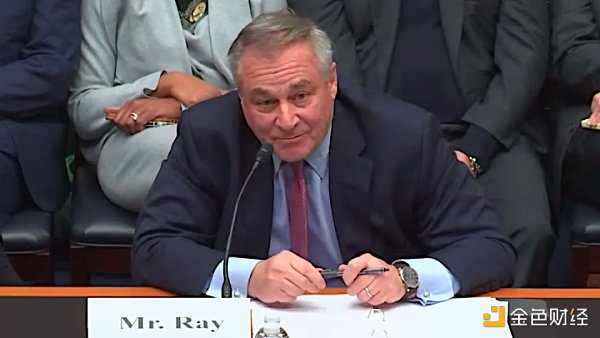Halved + Federal Reserve flood, the best show time for Bitcoin whales is here!
Is Bitcoin a safe-haven asset? Are institutions selling or increasing their holdings of Bitcoin? Is it a good time to buy Bitcoin?
Although everyone has an answer in their minds, it seems difficult to form a consensus. After the Federal Reserve recently offered an unlimited amount of water, the market's demand for hedging has been enlarged to the extreme, and the prices of paper gold and physical gold have been severely decoupled. Is a good proof.
What about Bitcoin with a "digital gold" narrative? Has the recent turbulence affected the demand of long-term investors?

- Bitcoin price rebounded strongly by nearly 50%, miners are back
- Demystify Bybit's new product "black technology", you can open both long and short, insurance contracts!
- Nic Carter: Crazy growing stablecoin could be bad for Ethereum
(Picture from: tuchong.com)
In order to illustrate these questions, I use the data of Bitcoin asset management company Grayscale in the past 2 months to try to answer them.
(Note: According to Grayscale's annual report last year, 71% of its investment funds come from institutions, so it can represent the behavior of some institutional investors.In addition, in Q4 2019, Bitcoin trust products, Grayscale's average new investment is about 1490 per week. Ten thousand U.S. dollars.)
How has Grayscale's Bitcoin Trust products performed since the outbreak of the new crown in February this year? 
(Note: The position data is calculated based on the total position and unit price per share announced by Grayscale. At present, GBTC per share = 0.00096492 BTC)
As shown in the figure above, since February 1st, the BTC assets managed by Grayscale have increased from 282364.38 BTC to the current 300782.446 BTC, a total increase of 18418 BTC, with an average daily increase of approximately 341 BTC (about 15.75 million US dollars per week).
Then Grayscale is the same as 貔貅, can only enter and leave?
This is not the case. In fact, during the past 54 days, Grayscale experienced negative growth for 6 days, the most of which was on March 14th. The number of BTC held by Grayscale on that day decreased by approximately 171.26 BTC.

(Figure: Grayscale daily BTC position change, unit BTC)
The number of days with a daily increase of more than 1000 BTC was 7 days, respectively on February 8, February 14, February 15, February 22, March 4, March 5, and March 7. .
From the point of time and the corresponding bitcoin price, the days when Grayscale saw a large increase in holdings in February were at the time when bitcoin was around the $ 10,000 mark. At this time, the foreign epidemic had not yet erupted. Demand, speculation may be due to the performance of the currency price and "halving" expectations.
In March, after the global spread of the new crown epidemic, Grayscale's average daily increase in holdings decreased compared with February (data was 392.7 BTC), and the average daily increase in holdings was about 281.176 BTC. It can be seen that the outbreak has indeed produced institutional investors. Some negative effects, in addition, it is worth noting that before and after the Bitcoin crash period on March 12 and March 13, the changes in Grayscale's position data were relatively small. It can be seen that institutional investors did not have a willingness to sell or bottom, but instead Reduced related activities.
So what effect will the Fed ’s big water release have on institutional investors?
From the data of the past two days, except for the 21st, there does not seem to be any abnormality. It can be seen that the short-term impact seems to be limited. As for what will happen in the later period, it may depend largely on the performance of the currency price.
Here I make three assumptions:
- After the daily output of bitcoin was reduced from 1800 BTC to 900 BTC in May, Grayscale's new daily BTC holdings remained unchanged (300 BTC), or even more, the probability of bitcoin will increase;
- After the daily output of bitcoin was reduced from 1800 BTC to 900 BTC in May, Grayscale's daily increase in the number of new BTC holdings will be halved, and Bitcoin may be sideways;
- After the daily output of bitcoin was reduced from 1800 BTC to 900 BTC in May, Grayscale's daily addition of BTC holdings was less than 150 BTC, and even a lightening situation occurred, the probability of bitcoin will fall;
Judging from the existing data and trends, the probability of occurrence of Case 3 is low, and the impact of the Fed's large water discharge, I personally think that Hypothesis 1 is more likely to occur.
What do you think?
We will continue to update Blocking; if you have any questions or suggestions, please contact us!
Was this article helpful?
93 out of 132 found this helpful
Related articles
- CFTC issues guidelines for digital asset delivery, chairman promises to encourage innovation
- STP founder Mike Chen talks about how standard token protocols respond to the "barbaric era" of the market | Chain Node AMA
- From "one yard pass" to "digital twin", the last link of the blockchain
- Windows Defender is found to be a security bug, and encrypted users may be at risk
- QKL123 market analysis | The third emergency meeting + unlimited QE support, Bitcoin's response rose sharply (0324)
- black market? Washed white? Is DASH's Darkness his dark history or his origins?
- The correlation between Bitcoin and gold is declining, has its "safe harbor" attribute gone forever?






